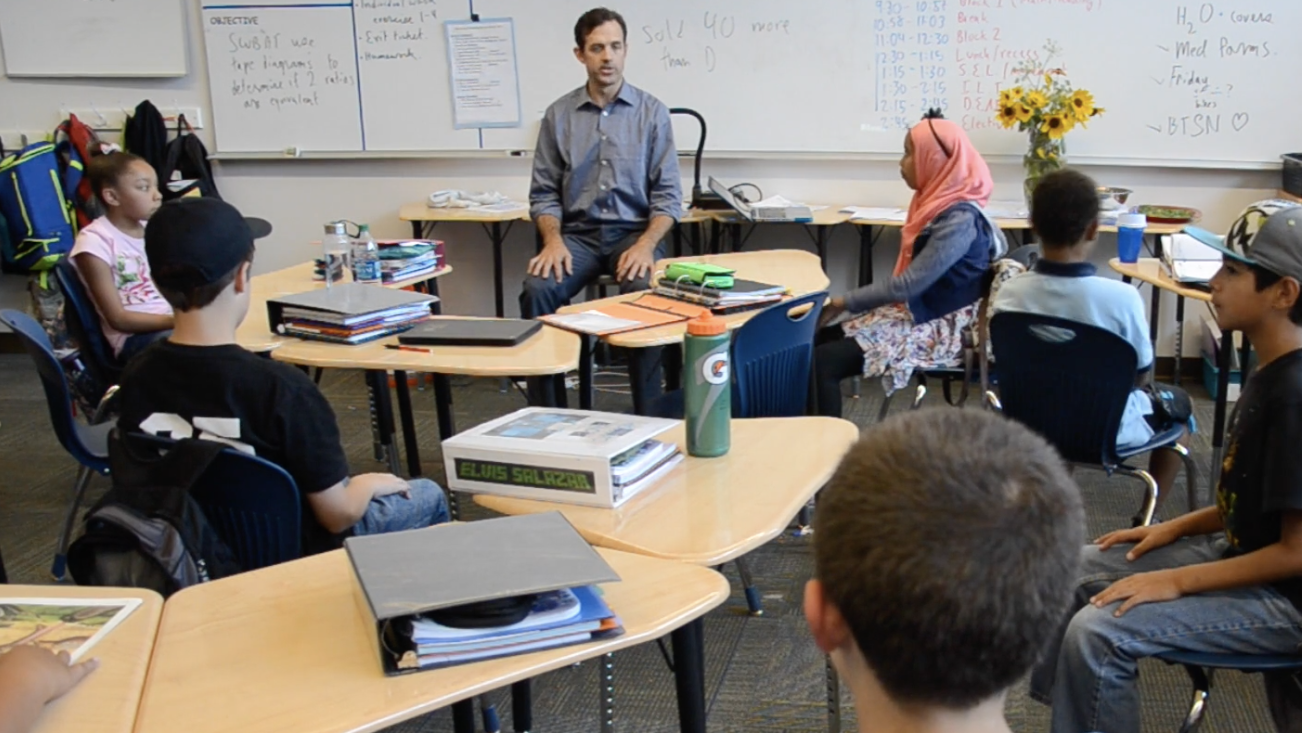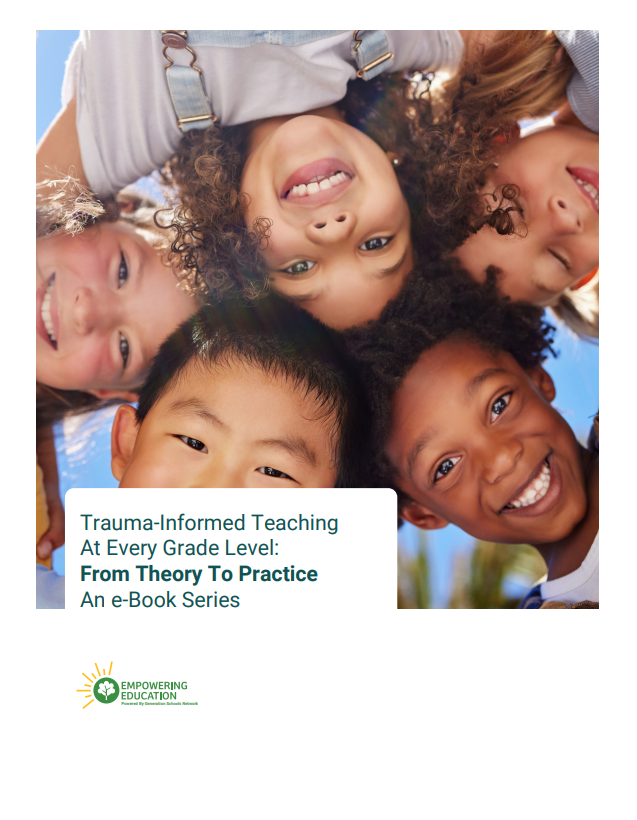How to Create a Trauma-Informed Classroom
If you teach kids who suffer from PTSD, there are things you can do in a trauma-informed classroom to help your students cope. We've compiled the top ten changes teachers can make to their classrooms to help students feel safer.
Note: This article was adapted from an article that was graciously contributed by Hermann Samano, the original version can be found here.
First of all, what does PTSD look like in the classroom?
PTSD stands for “post-traumatic stress disorder,” and can show up after children survive a traumatizing or life-threatening experience, such as divorce or sexual abuse. PTSD in kids can fluctuate rapidly from anxiety to depression. Symptoms of anxiety include feeling out of control, and depression may be characterized by feeling anxious, hopeless, or even suicidal. Please encourage your students to get professional medical advice if you recognize any of these symptoms.
For students with PTSD, depression, or anxiety, a trauma-informed classroom is important. There are ways you as the teacher can alter the student's surroundings to ease difficult mental health conditions. Our tips can help the symptoms and bring a much-needed boost to your class.
1. Examine Your Classroom Design with PTSD in Mind
There are ways you can redesign your classroom to help students cope, and these projects don’t have to be major to result in a positive change.
For starters, let the light in. Brighter rooms help lift your mood, and sunlight helps your body produce Vitamin D and serotonin, which acts as a natural antidepressant in your brain. Try hanging sheer curtains that let filtered, cheerful light into the room.
If your classroom doesn’t have a lot of windows, you can introduce more light by hanging a mirror strategically across from the window to reflect light back into the room. A mirror can also break up monotony on a wall and give the appearance of another window.
2. Take a Look at your Walls
Brightening up the colors of a classroom has been shown to have a positive effect on those suffering with PTSD, anxiety, or depression. A new coat of paint in a sunshine yellow, a soft, calming sea-foam green, or soft baby blue might be just the thing to give a subtle lift to the mood of a class. While you’re looking critically at your classroom, consider the decorations on your walls. Visual clutter isn’t calming or reassuring when you’re dealing with PTSD, depression, or anxiety, and it can keep you from sorting through emotions.
3. Get the Kids Active
Getting outside and being active can help with PTSD symptoms. Regular exercise naturally relieves stress and anxiety because it releases endorphins, often called the “feel-good” hormones. Many people find the act of moving arms and legs in a rhythmic movement, such as jogging, walking, or swimming, to be therapeutic.
Soak up more sun. Just as letting sunlight into your classroom is beneficial, being outside in the sunlight will help your students reduce anxiety and boost crucial nutrients like Vitamin D.
4. Seek Nature
Now that you have more natural light shining into your trauma-informed classroom, welcome some plants. Not only beautiful to look at, but plants are also beneficial. They use carbon dioxide (which we exhale) and release oxygen, giving us a healthier atmosphere. The process of taking care of plants can also be a calming experience. For use in an indoor classroom, pick a hardy, easy-to-grow plant like a pothos, which happens to be one of the best plants to remove toxins from the air.
5. Encourage Healthy Eating
Encourage your students to try fresh foods and limit processed foods with refined sugars and starches that can trigger changes in energy levels and mood. Adding fish, nuts, and flaxseed can help your students' emotional health.
6. Introduce Relaxation and Mindfulness Meditation to the Class
Learning to relax and meditate can provide excellent benefits for anyone suffering from PTSD, anxiety or depression. Learning meditation techniques like mindfulness, deep breathing, and progressive muscle relaxation can help you reduce symptoms of anxiety while increasing your feelings of emotional well-being. Mindfulness meditation can help you cope better with trauma-induced thoughts and memories that may invade your daily life. This practice may also help you handle emotional distress better. Meditation is not a fast process, but one that you build slowly. The more you regularly practice it, the more you’ll find it can help not only with your symptoms but with your daily life.
Find a meditation guide for those who’ve suffered trauma or who have anxiety or depression. Create a safe space for meditation practice in your trauma-informed classroom. If you don't want to teach group meditation to your class, your that’s okay, Empowering Education has a great lesson plan on teaching student-led mindfulness.
7. Aromatherapy
Aromatherapy, or inhaling the scents of essential oils, may help improve your sense of well-being, reducing anxiety and stress.
Passively breathing in essential oils (or a combination of oils) can foster a specific healing experience. For instance, lavender is well-known for helping you relax and sleep, while lemon oil can help with mild depression symptoms. Some essential oil blends address tension or promote a peaceful feeling, while others help calm your nerves. A wide array of available oils and oil blends helps you choose which work best for your students.
8. Art Therapy
Many sufferers of PTSD find art therapy helps them express and work through past trauma. Without realizing, you can tap into trapped emotions or thoughts and give them a voice in a safe environment just by painting, sculpting, drawing, or coloring. While creating art, PTSD sufferers may find it easier to connect with other people and talk about complex feelings and difficult topics like trauma.
How does it work? Doing art (of all kinds) can actually change neural pathways in the brain. This can lead to increasing a connection between the mind and body, the conscious and the unconscious. The process of painting or drawing (or doing other art) can trigger a part of the brain that’s not so available when you’re just talking and helps you process better.
9. Therapy, Emotional Support, and Service Dogs
Research shows that interacting with therapy dogs can increase feel-good chemicals like oxytocin and dopamine while reducing the stress chemical cortisol. Therapy dogs have been used with great results to lift spirits and help ease symptoms of PTSD, anxiety, and depression. Contact local service dog groups to find out if visits can be arranged in your classroom. Service dogs for PTSD go through lots of specialized training and are taught psycho-grounding behaviors that can help address the panic and anxiety associated with PTSD.
For instance, service dogs can sense subtle changes in behavior from PTSD triggers and can do things like become an actual barrier between you and the public, helping provide you with a sense of security and comfort. Service dogs also are taught other behaviors specific to each sufferer, including placing their bodies on specific stress-reducing points on your body or nudging or pawing during certain times to distract or redirect the person. These dogs can bring medicine when a timer goes off and can even be conversation starters to help you build social relationships. They must be perceptive and intuitive to the needs of someone suffering from PTSD, anxiety, or depression.

10. Create Liminal Space
Creating what’s called liminal spaces in your trauma-informed classroom can help your students cope with PTSD or anxiety. Often difficult to describe, they’re basically a place between areas or times. Think back to a place or time when you stopped whatever you were doing and thought, now this is just a … safe place. It’s like the moment the sun sinks into the horizon, a foggy sunrise, a deserted early-morning street, or an empty church. It’s sort of a sacred space.
When PTSD or anxiety keeps you from dealing with what’s right in front of you, sometimes it’s beneficial to go to this sort of safe space. You can create it right where you are, with some practice. Declare your liminal space, using words or gestures, and trick your brain so it enters into a trance-like state by meditating, chanting, or drumming. Some prefer to go to a specific location that they feel is a liminal space, like a property boundary, a place in the woods, or a crossroad.
Find What Works For Your Classroom
Everyone suffering from PTSD has a unique story and different needs for treatment and support. Changing your surroundings and making some lifestyle adaptations can help you manage symptoms. PTSD isn’t a sign of weakness, so have patience. Encourage your students to try different things like joining a PTSD support group and talking to a trustworthy friend or trained counselor who can help overcome past trauma.


